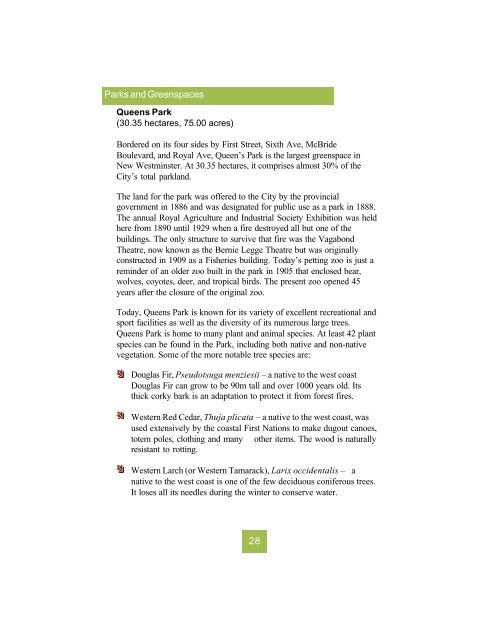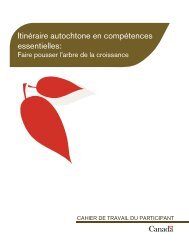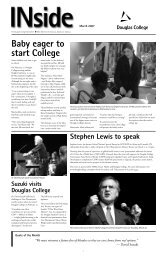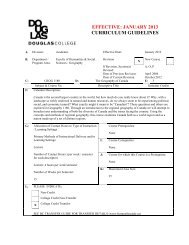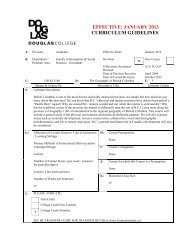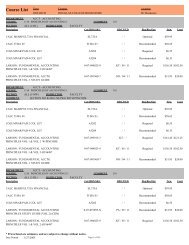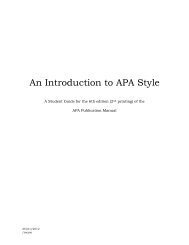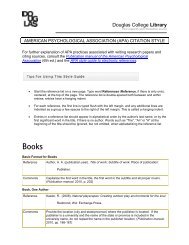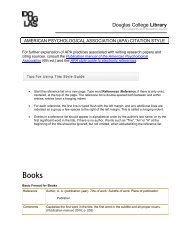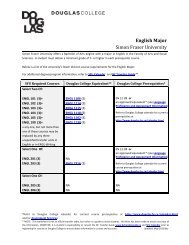New Westminster Environmental Almanac (2917 ... - Douglas College
New Westminster Environmental Almanac (2917 ... - Douglas College
New Westminster Environmental Almanac (2917 ... - Douglas College
Create successful ePaper yourself
Turn your PDF publications into a flip-book with our unique Google optimized e-Paper software.
Parks and Greenspaces<br />
Queens Park<br />
(30.35 hectares, 75.00 acres)<br />
Bordered on its four sides by First Street, Sixth Ave, McBride<br />
Boulevard, and Royal Ave, Queen’s Park is the largest greenspace in<br />
<strong>New</strong> <strong>Westminster</strong>. At 30.35 hectares, it comprises almost 30% of the<br />
City’s total parkland.<br />
The land for the park was offered to the City by the provincial<br />
government in 1886 and was designated for public use as a park in 1888.<br />
The annual Royal Agriculture and Industrial Society Exhibition was held<br />
here from 1890 until 1929 when a fire destroyed all but one of the<br />
buildings. The only structure to survive that fire was the Vagabond<br />
Theatre, now known as the Bernie Legge Theatre but was originally<br />
constructed in 1909 as a Fisheries building. Today’s petting zoo is just a<br />
reminder of an older zoo built in the park in 1905 that enclosed bear,<br />
wolves, coyotes, deer, and tropical birds. The present zoo opened 45<br />
years after the closure of the original zoo.<br />
Today, Queens Park is known for its variety of excellent recreational and<br />
sport facilities as well as the diversity of its numerous large trees.<br />
Queens Park is home to many plant and animal species. At least 42 plant<br />
species can be found in the Park, including both native and non-native<br />
vegetation. Some of the more notable tree species are:<br />
<strong>Douglas</strong> Fir, Pseudotsuga menziesii – a native to the west coast<br />
<strong>Douglas</strong> Fir can grow to be 90m tall and over 1000 years old. Its<br />
thick corky bark is an adaptation to protect it from forest fires.<br />
Western Red Cedar, Thuja plicata – a native to the west coast, was<br />
used extensively by the coastal First Nations to make dugout canoes,<br />
totem poles, clothing and many other items. The wood is naturally<br />
resistant to rotting.<br />
Western Larch (or Western Tamarack), Larix occidentalis – a<br />
native to the west coast is one of the few deciduous coniferous trees.<br />
It loses all its needles during the winter to conserve water.<br />
28


